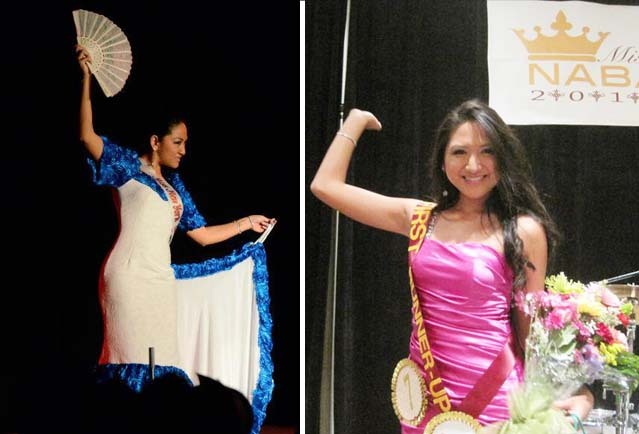"Airports see more sincere kisses than wedding halls. The walls of hospitals have heard more prayers than the walls of churches." - Anonymous
I've seen this anonymous quote re-blogged on Tumblr several times, and can't help but return to it. The first part truly resonates with me. I have a passion for aviation and through that I consider an airport as my playground while others might see it as place that many might dread - and understandably so! In airports I watch in envy as folks depart on their flights, being whisked away to another continent in a matter of hours. It's an envy that I've fed, and has transformed into an addiction to traveling. Over time, frequent plane-spotting jaunts became shifts at an information desk in Los Angeles International Airport. And one thing I loved about my position was unique sort of people-watching that can take place.
On the Arrivals level of an airport, one sees excited family members reunite with loved ones, chauffeurs holding names of business travelers written on paper, and couples in deep embraces. Go up one level to Departures and it already seems like a world away: scenes of families turn bittersweet as those loved ones eventually leave, businessmen shaking hands with the chauffeurs after what seems like a successful trip, and couples exchanging one last passionate kiss before parting ways.
My shift at the booth was during the late afternoon/early evening rush at the Tom Bradley International Terminal (TBIT) at the Los Angeles International Airport - LAX. It was during this shift that you'd see a truly international crowd. Flights from Asia, Europe, and South America would cram passengers of a cornucopia of backgrounds into the arrivals area of TBIT. One moment, I'd be speaking over the PA system, slaughtering the name of a passenger off an Emirates flight from Dubai. The next moment I'd be trying to remember whatever Japanese I knew to explain the baggage recheck process to tourists fresh off the ANA flight from Haneda. Another moment would be spent calming down a frustrated passenger fresh from the British Airways flight from Heathrow who wanted to file a complaint about his treatment with Customs and Border Protection. But one flight that I always looked forward to was one that seemed so close to home: Philippine Airlines 103.
This, alongside other flights coming in from Asia at that hour, would provide a steady stream of passengers whose customs I'm not only familiar with, but am comfortable to share. As long as there were no other passengers waiting, I'd engage in banter ranging from where they hailed from in the Philippines to hearing the stories of the trip they just returned from. I'd run into balikbayans coming back and OFWs heading to work in cruise ships based in Florida. There were also Pilipino tourists who were willing to go through the gauntlet of getting a visa in order to visit LA and the occasional lost Tita, who'd burst into tears as I both comforted her and tried tracking down her family. I'd end up resorting to finding her children on Facebook, then messaging them to pick up their mom. I never thought I could justify Facebook stalking...
On the note of asking Pilipino travelers where they hail from, I met a gentleman fresh from PR103. He came up a couple times and asked me to page his family for him. Third time around, I asked him where he was from and it turned out he lived in the town next to my mom's. As luck would have it, he actually knew my uncle - the parish priest of their town! Can you imagine? At the main international terminal of one of the world's busiest airports - and America's gateway to the Asia Pacific - I ended up running into someone who has heard my uncle's homilies on a constant basis.
And along with the aforementioned titles that LAX holds (one of my favorites being "armpit of the West Coast"), it also is an airport of many celebrity sightings. It's something that shouldn't be unexpected considering the proximity to the SoCal film industry. Thanks to such a distinction, there were teams of paparazzi camping around the terminals, and these teams were always a ball to witness in action. Though it was a common occurrence, it was always a pleasant surprise to see a celebrity myself, especially if he or she was Pilipino.
The night that the cast of Be Careful With My Heart came through LAX was certainly one to remember. I remember seeing way more Fil-Am meet-and-greeters than usual. There was one who constantly came up to the desk to check the status on PR103. Eventually, I asked if she had someone onboard that flight and then it finally all came together: the cast of Be Careful With My Heart were due to arrive on that flight. Once the cast exited immigration, pandemonium ensued. Fans ran to Richard Yap and Jodi Santamaria as they slowly inched their way to a private vehicle. It was a procession of celebrities and fans that caused a mess to the traffic bottleneck that already was in TBIT - my heart went out to LAXPD that night. Noticing the flood of Pilipinos in the arrivals area, I was even asked by other bystanders if Manny Pacquiao had flown into LAX.
A habit that I've adopted, either from my upbringing or from the frequent trips to the Philippines, is what seems like a simple thing to do: smile. During the latter, I saw such smiling faces from children who'd lost much from Typhoon Yolanda (Haiyan). But even without going to that extreme, I've been greeted by smiling Pilipinos everytime I return to the Philippines. From the sweet Tita operating the nearby sari-sari store, to the bandolier-clad and M-60 machine gun-armed Philippine marine, they'd always raise a smile when I'd make eye contact with them. I mean, if a someone like Kuya Marine (who had every right to be a macho badass) managed to crack a smile despite the circumstances, I learned I could certainly make the effort as well. And indeed that effort became rewarding, especially while working at LAX. Such a simple act has proven helpful in disarming stress and presenting welcoming relief to exhausted travelers.
I've since moved to Hawaii and while Honolulu's coverage of flights across the Pacific are nothing to sneeze about, nothing beat the sheer mass that LAX had. I looked forward to Thursday nights, working the desk alongside folks who were also car dealers, engineers, lawyers, a nun and a World War II vet! But one thing I really miss the most is welcoming the passengers of PR103. To be able to be a part of the journey that Pilipinos would take to and from their homes, and to provide them with the sort of familiarity while rendering assistance, were things I truly took pride in. Alongside the "yokoso", "bienvenidos", and "willkommen" that I would use to greet passengers from ANA, Iberia and Lufthansa flights, I'd always look forward to saying it for our PR103 passengers in Tagalog:
Mabuhay!











 Photo Credit: The Inquirer, Manila Bulletin, Binibining Pilipinas, Khaleej Times, Filipiknow.net, and amywillerton.blogspot.com
Photo Credit: The Inquirer, Manila Bulletin, Binibining Pilipinas, Khaleej Times, Filipiknow.net, and amywillerton.blogspot.com